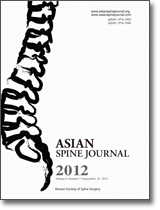
Tubercular spondylitis: Anterior debridement with instrumentation is safe and effective

Tubercular spondylitis: Anterior debridement with instrumentation is safe and effective
Evaluation of Role of Anterior Debridement and Decompression of Spinal Cord and Instrumentation in Treatment of Tubercular Spondylitis
Asian Spine J. 2012 Sep;6(3):183-93. doi: 10.4184/asj.2012.6.3.183. Epub 2012 Aug 21Did you know you're eligible to earn 0.5 CME credits for reading this report? Click Here
Synopsis
32 patients with tuberculous spondylitis were randomized to receive anterior debridement and spinal cord decompression with anterior instrumentation or with no implant. Over 3 years, there was significantly greater improvement in local kyphosis in the instrumented group than in the no implant group. The instrumented group also demonstrated significantly less late loss of correction than the no implant group. However, there was no difference between the two groups with respect to improvement in canal stenosis and in the rate of complications.
Was the allocation sequence adequately generated?
Was allocation adequately concealed?
Blinding Treatment Providers: Was knowledge of the allocated interventions adequately prevented?
Blinding Outcome Assessors: Was knowledge of the allocated interventions adequately prevented?
Blinding Patients: Was knowledge of the allocated interventions adequately prevented?
Was loss to follow-up (missing outcome data) infrequent?
Are reports of the study free of suggestion of selective outcome reporting?
Were outcomes objective, patient-important and assessed in a manner to limit bias (ie. duplicate assessors, Independent assessors)?
Was the sample size sufficiently large to assure a balance of prognosis and sufficiently large number of outcome events?
Was investigator expertise/experience with both treatment and control techniques likely the same (ie.were criteria for surgeon participation/expertise provided)?
Yes = 1
Uncertain = 0.5
Not Relevant = 0
No = 0
The Reporting Criteria Assessment evaluates the transparency with which authors report the methodological and trial characteristics of the trial within the publication. The assessment is divided into five categories which are presented below.
2/4
Randomization
3/4
Outcome Measurements
2/4
Inclusion / Exclusion
4/4
Therapy Description
2/4
Statistics
Detsky AS, Naylor CD, O'Rourke K, McGeer AJ, L'Abbé KA. J Clin Epidemiol. 1992;45:255-65
The Fragility Index is a tool that aids in the interpretation of significant findings, providing a measure of strength for a result. The Fragility Index represents the number of consecutive events that need to be added to a dichotomous outcome to make the finding no longer significant. A small number represents a weaker finding and a large number represents a stronger finding.
Why was this study needed now?
There are various methods of treatment for tuberculous spondylitis, including chemotherapy and surgery. Of the existing surgical treatments, the most popular involves anterior debridement, strut grafting and instrumentation. While anterior debridement has been determined to be superior to posterior debridement due to the fact that it reduces bleeding and fusion of spinal levels, it is also associated with a few disadvantages. These include concerns that there may not be sufficient room for the insertion of anterior implants and the danger that vessels in the thoracic spine may be impaled. This study aimed to evaluate the effectiveness of anterior debridement, autofibular strut grafting with anterior instumentation compared with the same technique without instrumentation in patients with tuberculous spondylitis.
What was the principal research question?
Is anterior debridement, autofibular strut grafting with anterior instrumentation more effective than the same procedure without instrumentation with regard to degree of local kyphosis, loss of correction, and canal stenosis improvement in patients with tuberculous spondylitis assessed over 3 years?
What were the important findings?
- There was no difference between the two groups with respect to improvement in canal stenosis (group 1: 39.98%, group 2: 34.8%; p=0.367)
- Group 1 demonstrated significantly greater improvement in local kyphosis (percentage correction: 72.02%, mean: 24.2 degrees) than group 2 (19.42%, mean: 6.1 degrees) (p<0.001)
- At 3 years, there was significantly less late loss of correction in group 1 (1.7 degrees) than in group 2 (6.7 degrees) (p=0.01)
- There were zero occurrences in both groups of wound infection, new discharging sinuses, and recurrences of the disease in the spine
What should I remember most?
The results indicated that anterior debridement, decompression of the spinal cord and autofibular strut grafting with anterior instrumentation is more effective than the same procedure without instrumentation in regards to preventing late loss of correction at 3 years, improving local kyphosis immediately post-operatively, and improving canal stenosis.
How will this affect the care of my patients?
Anterior debridement, decompression of the spinal cord and autofibular strut grafting with anterior instrumentation appears to be safe and effective for patients with tuberculous spondylitis.
Learn about our AI Driven
High Impact Search Feature
Our AI driven High Impact metric calculates the impact an article will have by considering both the publishing journal and the content of the article itself. Built using the latest advances in natural language processing, OE High Impact predicts an article’s future number of citations better than impact factor alone.
Continue



 LOGIN
LOGIN

Join the Conversation
Please Login or Join to leave comments.